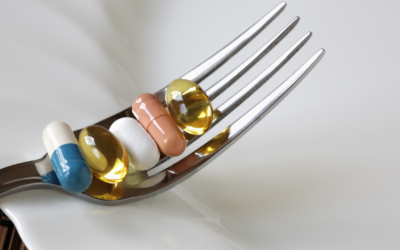In the late 1950’s a sedative drug used to treat morning sickness in pregnancy called thalidomide caused a horrific drug disaster whose emblematic images of limbless and handicapped babies born to distraught mothers linger to this day. The United States Congress swung into action. They wanted to prevent such a tragedy happening again. They were also determined to rein in the marketing excesses of the pharmaceutical industry.
Three steps were taken
First – new drug development was rewarded with product rather than process patents.
Third – new drugs had to prove they worked through controlled trials before they could be marketed.
In 1962 it looked like these steps would make for safer and more effective drugs and ultimately reduced healthcare costs.
On the 50th anniversary of the 1962 FDA bill enacted by Congress, Pharmageddon shows how these very arrangements have led to an escalating number of drug induced death and injury, how in some areas of medicine drug induced death is the commonest form of death, and how the costs of treating these problems exceed the costs of the entire drugs budget.
Pharmageddon also shows how these same changes have turbo-charged pharmaceutical industry marketing. The horrors are best caught by the example of the increasing numbers of pregnant women who religiously steer clear of alcohol, tobacco, soft cheeses, or anything that might harm their unborn child, but who are nonetheless being urged by their doctors to take drugs like the antidepressants — now the most commonly prescribed drugs in pregnancy — even as the evidence accumulates that these drugs cause birth defects, double the rate of miscarriages, and cause mental handicap in children born to mothers who have been taking them.
This example of a shepherding of innocents into pharmaceutical killing fields is not an isolated incident. Life expectancy in the US, the country that consumes most of the latest life-saving drugs is falling rapidly compared to the rest of the world. For diseases like schizophrenia, we are now doing 10 times worse in terms of life expectancy than we were 100 years ago.
The means to protect ourselves from a recurrence of the thalidomide disaster have been our undoing. Product patents gave an incentive to pharmaceutical companies to produce blockbuster drugs — drugs that were so valuable to a company and its survival that the incentives to breach regulations and hide any safety data that might be inconvenient for the company are so huge that entire trials are hidden, that almost all trials are ghost-written to ensure the data looks right, and no one, not even the FDA, has access to the data.
Prescription-only status has made a small number of doctors the conduit for prescription drugs, and company marketing can concentrate on these few consumers and understand them better than they understand themselves. Doctors claim to be shielded by guidelines and evidence based medicine from company marketing — seemingly unaware that companies are now the most enthusiastic advocates of guidelines and evidence based medicine.
In order to move the product, prescription-only arrangements also mean that doctors have to give us diseases if they want to give us pills and as a result we are all becoming more and more diseased than ever before.
After a bank raid in Sweden in 1973, it was recognized that isolation, a threat to life, and the kindness of captors can lead to Stockholm Syndrome. Stockholm Syndrome is exactly what prescription-only arrangements impose on patients and doctors. No medical school on the planet offers training on how to handle Stockholm Syndrome.
It is the reason doctors fail to recognize that adverse events happening to their patients even though these are now in the fourth leading cause of death and how they rarely intervene to save their patients.
Clinical trials were introduced as the eye of a needle through which the financial camel that is pharmaceutical industry would have to squeeze if it wanted to get drugs on the market and make money. These trials would establish if drugs worked and would lead to a clear recognition of their hazards. But we have been led badly astray. The most extraordinary symbol of just how badly lies in the fact that the one drug that had been through a controlled trial before it was supposed to be marketed in which it had been shown to be safe and effective was … thalidomide. This is the system on which we now depend to avoid future drug disasters.
Once put in place, industry took over the running of trials. More than 90% of all clinical trials are now run by private companies, which organize ethical approval through other private companies and outsource the trials to parts of the world where oversight is minimal. The results, sometimes stemming from patients who don’t exist, are fed back to the parent companies coded in a manner that often causes problems to vanish. Those trials and their results that suit company marketing agendas are then written up by ghost-writers and published in the leading medical journals — even though the editors know what is happening and the lives they are putting at risk by publishing these articles.
Far from making drugs safer, trials are now being used by industry to conceal the risks that drugs entail. They are part of a system to deny any side effects could be happening. Here’s how. If something goes wrong on a drug, industry claims that no one can link the drug to the problem unless a clinical trial has shown there is a statistically significant link. And everyone buys this — so that even when serious problems happen on a drug and clear up when the drug is stopped and reappear if the drug is reintroduced, industry can deny a link and can expect regulators and academics to line up behind them. They repeatedly agree their drug causes problems in private but deny it in public. As far as industry are concerned, we and our problems have become anecdotal.
The Book – Pharmageddon offers a range of solutions to these problems, one of which is an adverse event reporting website for patients — RxISK.org — which encourages doctors and patients to believe the evidence of their own eyes and have the courage to make a linkage between treatments and problems.
I heard an hour interview with Dr David Healy, I couldn’t get out of my car until it was finished. I haven’t read the book, but it is on its way to my library for further reading and investigation.






0 Comments